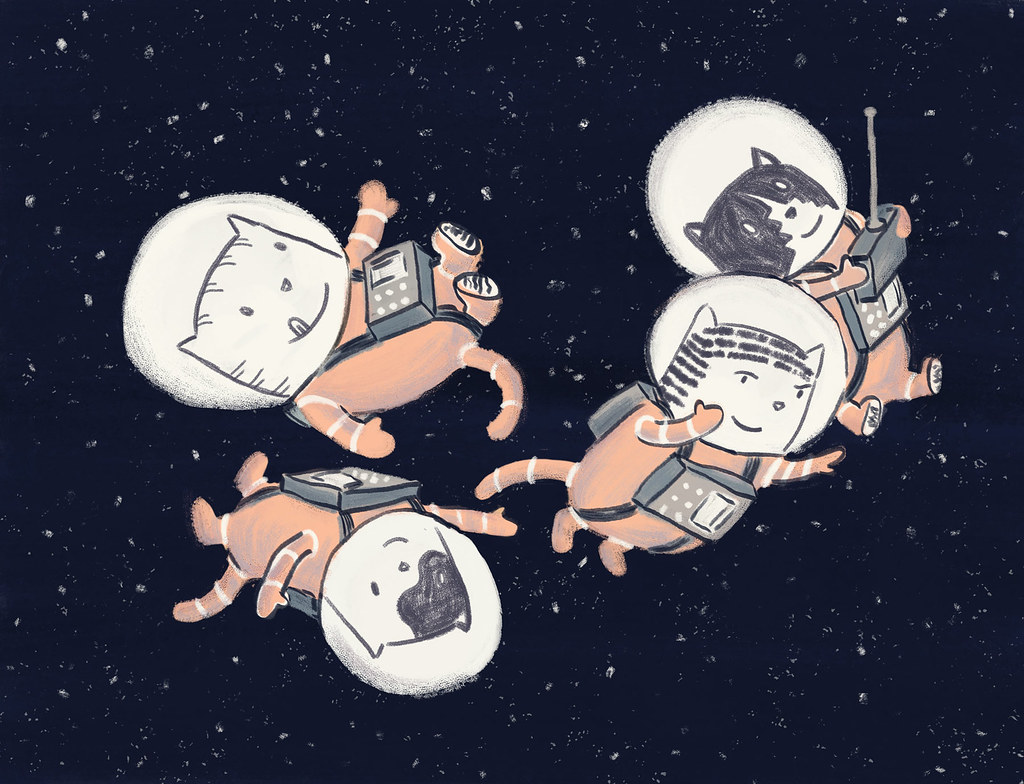As a librarian who loves reading about space explorations both real and imagined, I thought I'd share a few of my favorites here today. I hope you'll share some of your favorites in the comments as well!
Biography and Non-Fiction
A memoir by the former NASA astronaut and NFL wide receiver traces his personal journey from the gridiron to the stars, examining the intersecting roles of community, perseverance, and grace that create opportunities for success.Endurance: A Year in Space, a Lifetime of Discovery by Scott Kelly with Margaret Lazarus Dean
The veteran of four space flights and the American record holder for consecutive days spent in space, Scott Kelly has experienced things very few have. He describes navigating the extreme challenge of long-term spaceflight, both existential and banal.
Packing for Mars: the Curious Science of Life in the Void by Mary Roach
Space is a world devoid of the things we need to live and thrive: air, gravity, hot showers, fresh produce, privacy, beer. Space exploration is in some ways an exploration of what it means to be human. From the space shuttle training toilet to a crash test of NASA's new space capsule (cadaver filling in for astronaut), Roach takes us on a surreally entertaining trip into the science of life in space and space on Earth.
Sally Ride: America's First Woman in Space by Lynn Sherr
This book is a biography of Sally Ride, America's first woman in space, with exclusive insights from her family and partner, and by the ABC reporter who covered NASA during its transformation from a test-pilot boys' club to a more inclusive elite. A member of the first astronaut class to include women, Ride broke through a quarter-century of white male fighter jocks when NASA chose her for the seventh shuttle mission, cracking the celestial ceiling and inspiring several generations of women.
Novels and Science Fiction
On a cold spring night in 1952, a huge meteorite fell to earth and obliterated much of the east coast of the United States, including Washington D.C. The ensuing climate cataclysm will soon render the earth inhospitable for humanity, as the last such meteorite did for the dinosaurs. This looming threat calls for a radically accelerated effort to colonize space, and requires a much larger share of humanity to take part in the process. Elma York's experience as a WASP pilot and mathematician earns her a place in the International Aerospace Coalition's attempts to put man on the moon, as a calculator. But with so many skilled and experienced women pilots and scientists involved with the program, it doesn't take long before Elma begins to wonder why they can't go into space, too. Elma's drive to become the first Lady Astronaut is so strong that even the most dearly held conventions of society may not stand a chance against her.
In four years Prime Space will put the first humans on Mars. Helen Kane, Yoshi Tanaka, and Sergei Kuznetsov must prove they're the crew for the job by spending seventeen months in the most realistic simulation ever created. Retired from NASA, Helen had not trained for irrelevance. It is nobody's fault that the best of her exists in space, but her daughter can't help placing blame. The MarsNOW mission is Helen's last chance to return to the only place she's ever truly felt at home. For Yoshi, it's an opportunity to prove himself worthy of the wife he has loved absolutely, if not quite rightly. Sergei is willing to spend seventeen months in a tin can if it means travelling to Mars. He will at least be tested past the point of exhaustion, and this is the example he will set for his sons.
Mark Whitney was nearly killed by a dust storm on Mars and was abandoned by his crew who thought him dead. Now he's all alone with no way of letting Earth know he's alive, which doesn't matter because his supplies would run out before they'd get there. Either way, the environment or human error will likely kill him first. Not giving in, Mark works to survive, battling obstacle after obstacle, but will it be enough?


